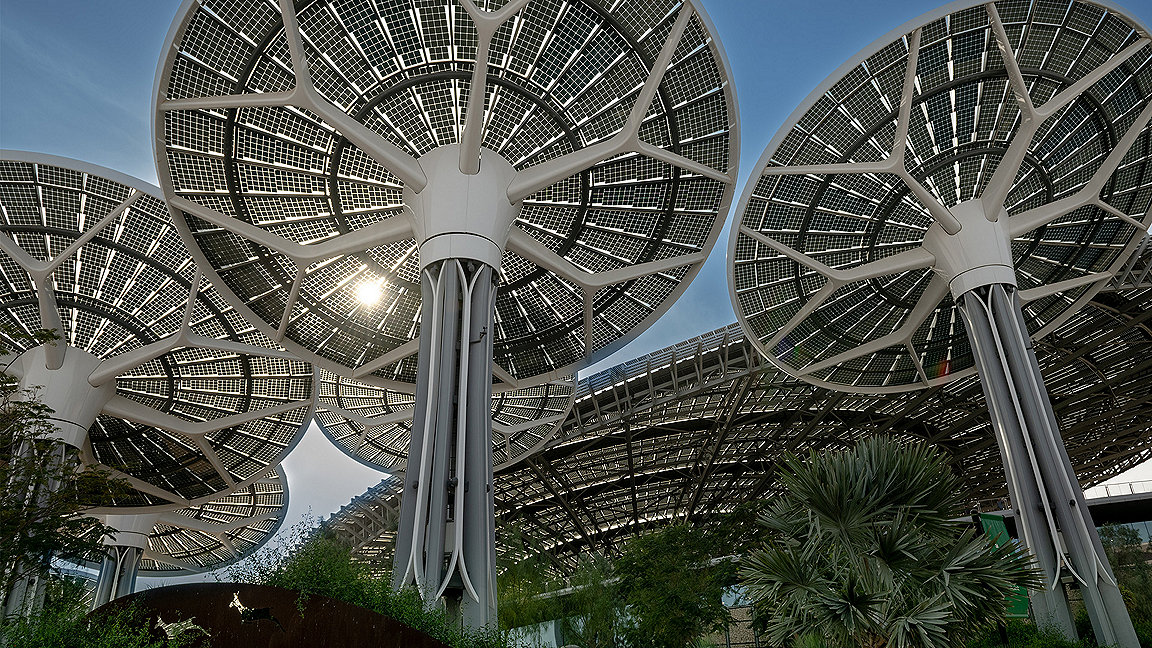
Terra - The Sustainability Pavillion, Expo City, Dubai
As this year’s COP28 takes place in UAE (from 30 November to 12 December), it provides an opportunity to look back at some of the key topics world leaders will be debating.
There are the prominent subjects like protecting biodiversity, to the lesser-known Sustainable Urban Drainage Systems (SuDS). And, one that could have consequences for millions of homeowners worldwide, questioning whether green lawns are sustainable or even ethical in drought-prone regions.
The built environment is inextricably linked with decarbonisation, net zero goals and the battle against climate change. Modus regularly covers these subjects from a range of viewpoints.
Here are the features published this year that all COP28 attendees should know about:
The Darwin Initiative: boosting biodiversity worldwide
The UK-based biodiversity programme works with projects around the world, offering funding and expertise, and empowering local communities to support themselves
Turf war: goodbye to grass lawns in arid US regions
In the dry south-west US, local authorities are incentivising homeowners to rip up turf lawns and replace them with something less demanding on valuable water supplies.
Deeper underground: using soil to capture carbon
Under the right conditions, soil can store vast amounts of carbon from the atmosphere. But achieving this can prove impractical on large, industrialised farms.
“Improving the soil to hold carbon is something that any farmer – or even gardener – can and should be thinking about” Dr Elizabeth Stockdale, National Institute of Agricultural Biology
Au revoir automobile: are cities better without cars?
The benefits of going car-free include cleaner air, safer streets and more cohesive neighbourhoods, but not everyone agrees with this vision of the future.
SuDS: mimicking nature to keep homes safe from flooding
Sustainable Urban Drainage Systems help property developers meet biodiversity and nutrient neutrality requirements, while mitigating flood risk, on new housing projects
Food glorious food: how gardens create communities
Having the space to grow our own fruit and vegetables doesn’t just mean easy access to fresh food, it also helps property developers put a meaningful tick in the ESG box.
“Urban planning should work for people, let’s start there. People should be healthy” Ron Finley, The Ron Finley Project
‘Carbon blindness is a big issue across the industry’
Modus meets ZERO Next, a group of young industry professionals who say targets for net zero carbon by 2050 are too slow and much more urgent action is needed.
Bamboo: the renewable shoot for sustainable structures
Strong, resilient and earthquake resistant, the fast-growing grass is increasingly being looked at as a cheap, sustainable alternative to steel and concrete
The most sustainable housing development in the world?
The UN17 Village development in Ørestad, Copenhagen will be the first to achieve all the United Nation’s 17 Sustainable Development Goals.
Let it grow: the 30x30 pledge to protect biodiversity
Nearly 200 countries have signed a deal to conserve 30% of land and seas by the year 2030 – how will this be regulated and what does it mean for the built environment?
“In fragmenting our landscapes, we’re undermining the resource base that supports human endeavours. We can’t just whittle it away” Gary Tabor, Center for Large Landscape Conservation
Coming clean: the benefits of bioremediation
Using bacteria to cleanse soil doesn’t just remove hazards from contaminated areas, it neutralises toxins in the process.
Are data centres too demanding on raw materials?
As global demand for data storage continues to grow, more physical spaces to house servers are needed. But a balance between data demand and environmental concerns must be struck.
Waterproof: transforming Toronto’s Port Lands
A previously neglected waterfront wasteland has become the focus of one of the world’s most ambitious flood resilience and redevelopment projects.














